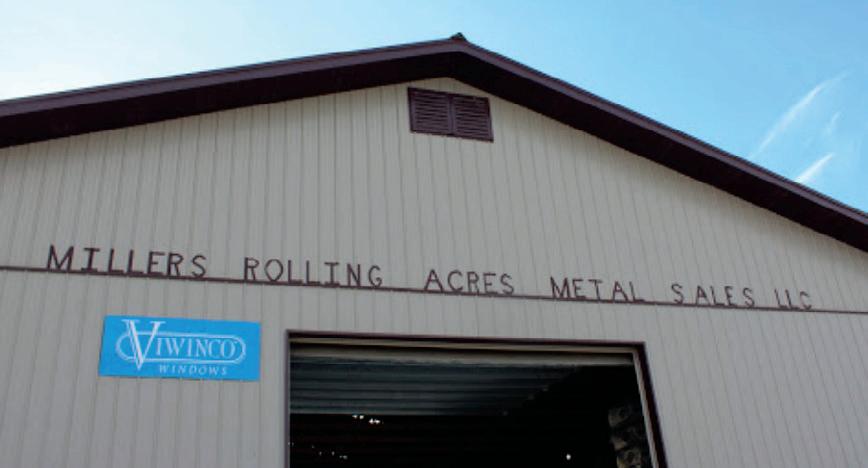
3 minute read
Riparian zones important to ecosystems
By Dylan Stine
Riparian zones are a very important part of our everyday life. They serve many purposes along the streams and rivers to support a biodiversity ecosystem.
Advertisement
A riparian zone is an area of land on or adjacent to a river or stream, normally dominated by herbaceous cover that acts as a buffer from the upland. These areas are tolerant to flooding or saturated soils normally in the floodplain. They are also home to an abundance of wildlife.
Water quality. These zones are important to water quality in many ways. Water will naturally flow at 3½ ft/sec. To maintain that speed, streams and rivers will start to meander or head cut deeper.
While most streams you see may have a meandering look, this does not mean they are unhealthy. Riparian zones will hold the soil in place to reduce erosion.
Trees growing on the river and stream banks will help stabilize the banks to reduce stream bank erosion. They can act as a buffer to slow runoff from fields, roads and urban areas. The trees, grass and plants that grow there can remove nutrients and sediments, and even block pesticides from reaching the streams.
These areas have a seasonally high-water table keeping the soils moist most of the time. The soils here act as a sponge and can absorb a lot of runoff. This helps to protect the surface water.
The soils and riparian zones combined can take the excess water on floodplains by increasing water storage capacity and reducing the risk of erosion. When the water level retreats, the groundwater in the soil will be right behind it opening more storage for the next flood.
The trees in the riparian zone can also block the drift from pesticides being applied and protect the organisms that inhabit the streams and rivers providing an overall healthy ecosystem.
Wildlife protection. Wildlife frequently inhabits these zones. Protection and cover are essential for wildlife survival. Riparian zones provide this by acting as a travel corridor for many different species.
Fish greatly benefit because of the shade provided by the trees creating cooler water temperatures. The clean and sediment free water is important for fish and aquatic in-


The Dirt on Conservation Dylan Stine
sects to be able to breath and establish spawning sites.

Leaves, woody debris and other organic materials provide habitat for the fish and their prey. All types of mammals and amphibians rely on riparian habitats for foraging, nesting and shelter.
Riparian Zones serve as the water treatment facilities for our watersheds.
(Dylan Stine is a district technician with the Tuscarawas Soil & Water Conservation District You can reach him at 330-339-7976.)


Election set for Ashland SWCD supervisor
ASHLAND, Ohio —The Ohio Soil and Water Conservation Commission will cause an election of supervisors of the Ashland Soil and Water Conservation District to be held in accordance with Chapter 940 of the Ohio Revised Code.

Individuals who own or occupy land within the Ashland Soil and Water Conservation District and are
18 years of age or older may vote for supervisor.
One supervisor will be elected to a three-year term starting Jan. 1, 2024 and ending Dec. 31, 2026. The nominees are Jed Johnson and Scott Stocals.
There are 3 ways an eligible voter can cast a ballot: at the SWCD office, 110 Cottage Street, Ashland, from July 27 to Aug. 25 during nor- mal business hours; at the SWCD Annual Meeting, which will be held from 5:30-6:30 p.m. Aug. 22 at Ashland University’s Myers Convocation Center; or voting absentee from July 27 to Aug. 25 by requesting the ballot application and election ballot from the SWCD office at the following address 110 Cottage St., Ashland, by calling 419-281-7645 or email ashlandswcd@ashlandcounty.org.
Sugarcreek StockyardS

Market Reports
Market Report Key: Prices are listed per hundredweight (cwt.) unless otherwise indicated.
The cwt. price is calculated by multiplying the weight by the price.

For example, if a 115-pound calf sold for $79/cwt., the cost would be $90.85 (115 X .79/lb.).
Horse saLe every Friday tack at 11:00 a.m. – Horses approx. 2:00 p.m. monday cattLe saLes noW avaiLaBLe onLine @ dvaUction.com

Heat formed 40 Year 28 Gauge Metal

Heat formed 50 Year 27 Gauge Metal

(Please register at least 24 hours prior to sale.) Live
For questions or to consign: call 330-831-1720 or email sugarcreekstockyard@gmail.com www.sugarcreekstockyard.com










